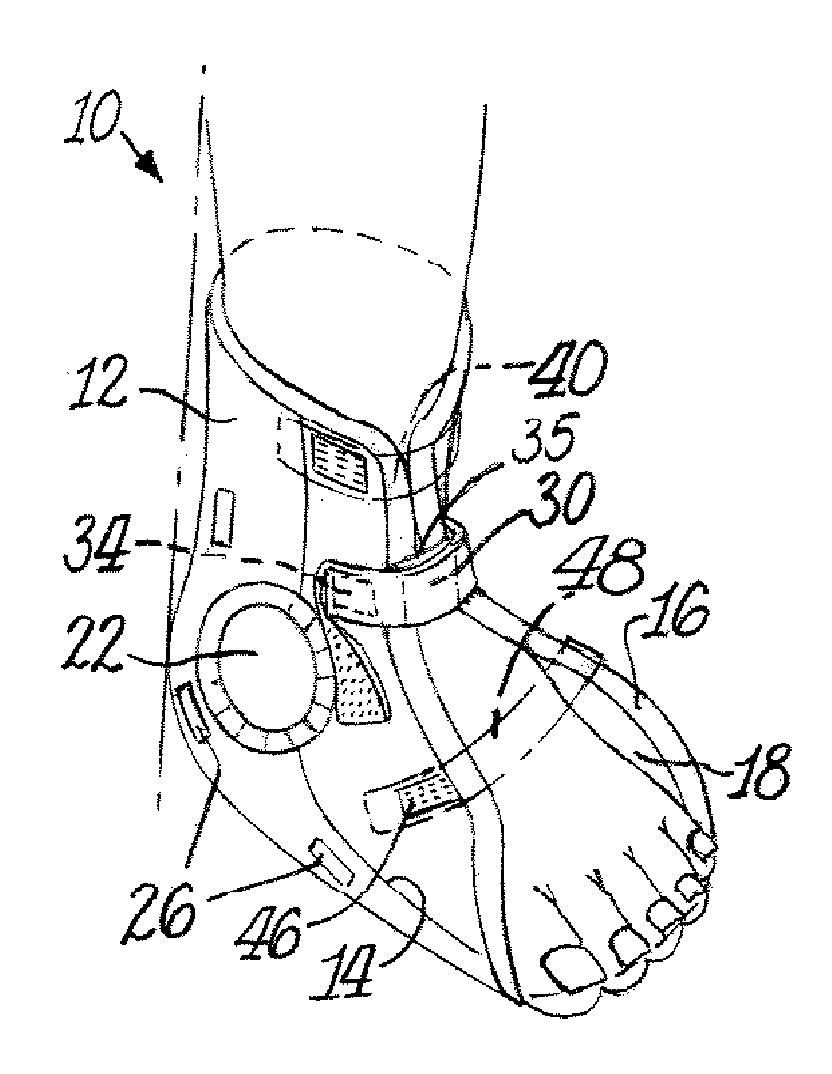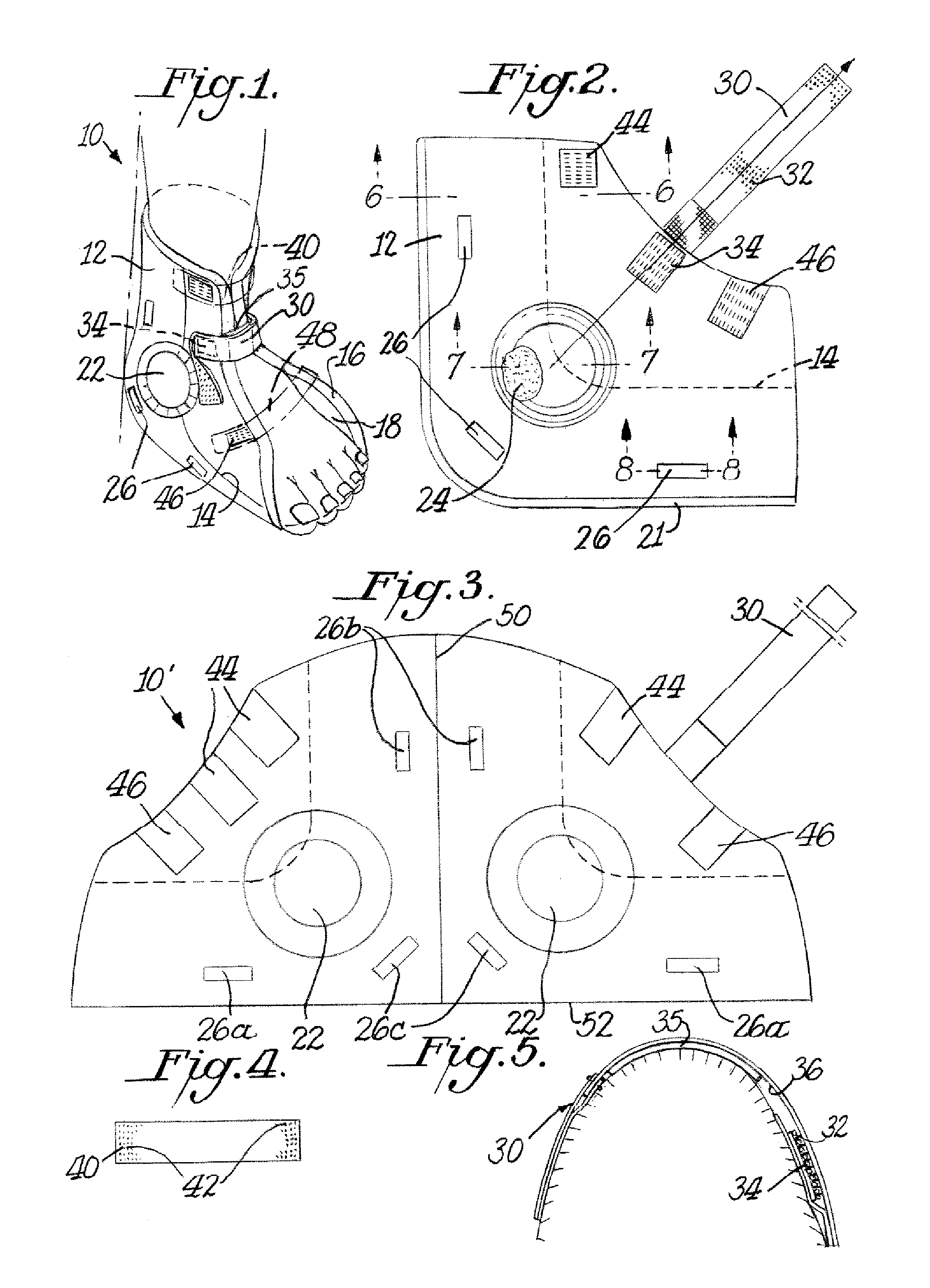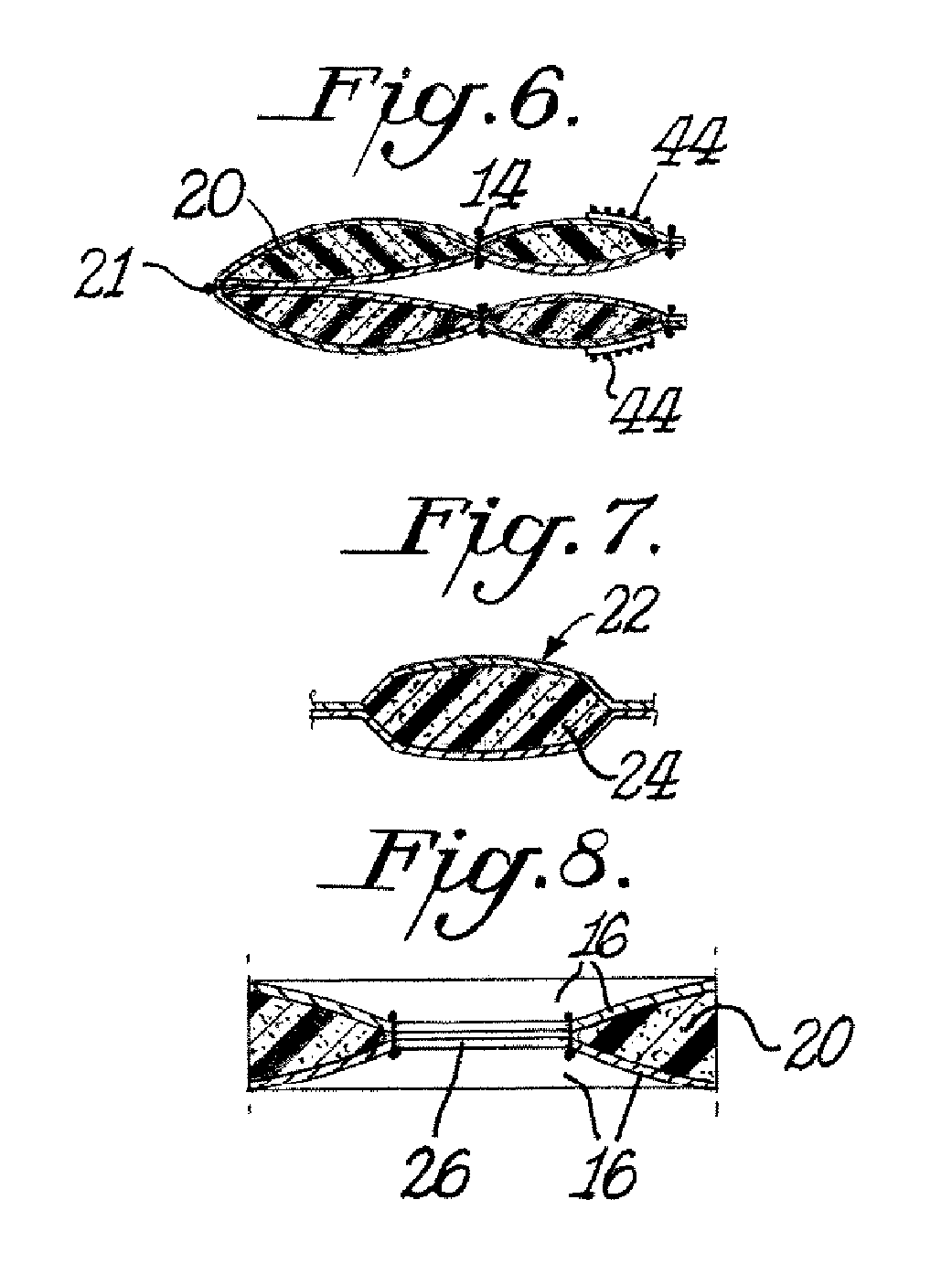Anti-gravity decompressant for lower extremities
a technology of anti-gravity and lower extremities, which is applied in the field of heel and ankle protector coverings or boots, can solve the problems of material not being laundered, material cannot be laundered, and the patient's limb is lost, so as to increase the air circulation to the patient's skin
- Summary
- Abstract
- Description
- Claims
- Application Information
AI Technical Summary
Benefits of technology
Problems solved by technology
Method used
Image
Examples
Embodiment Construction
[0023]With reference now to the drawings, and in particular to FIGS. 1-8, an anti-gravity decompressant or protector for protecting a patient's heel and ankle embodying the principles and concepts of the present invention and generally designated by the reference numeral 10 will be described.
[0024]The protector 10 comprises a quilted textile foot and ankle covering 12 having an outer fabric 16 and an inner fabric 18 with fiber fill, foam, memory foam or other quilt filling 20 therebetween. A preferred filling is memory foam (viscoelastic foam), which is known for its resilience and soft tactile property when subjected to compression. The inner fabric 18 and outer fabric 16 are held together by quilting stitching 14 such as shown in FIG. 1. Although one long quilting stitching 14 line is shown on each of the left and right sides of the protector 10, additional quilting with various stitching patterns are possible within the scope of this invention.
[0025]One possible pattern 10′ for m...
PUM
 Login to View More
Login to View More Abstract
Description
Claims
Application Information
 Login to View More
Login to View More - R&D
- Intellectual Property
- Life Sciences
- Materials
- Tech Scout
- Unparalleled Data Quality
- Higher Quality Content
- 60% Fewer Hallucinations
Browse by: Latest US Patents, China's latest patents, Technical Efficacy Thesaurus, Application Domain, Technology Topic, Popular Technical Reports.
© 2025 PatSnap. All rights reserved.Legal|Privacy policy|Modern Slavery Act Transparency Statement|Sitemap|About US| Contact US: help@patsnap.com



